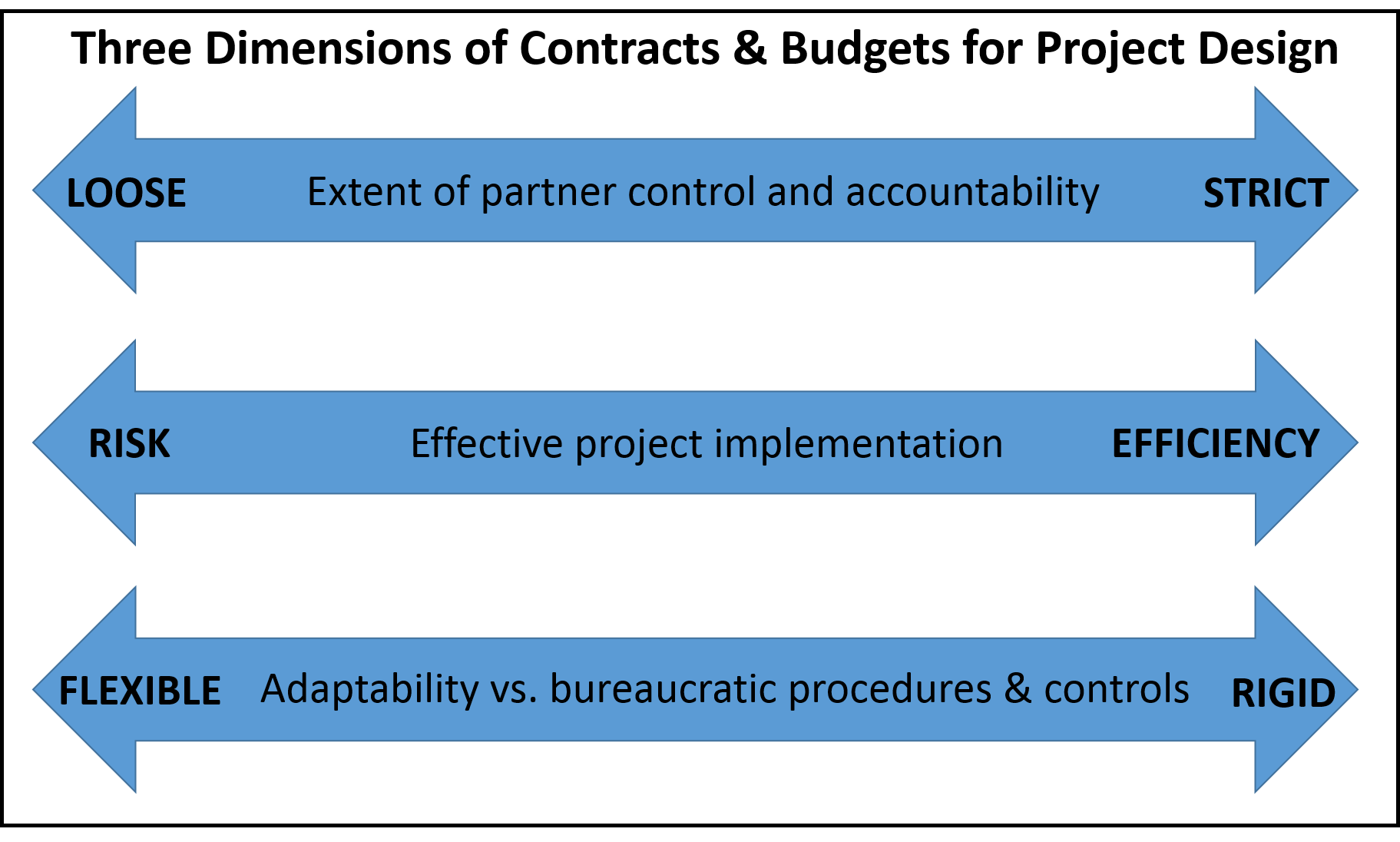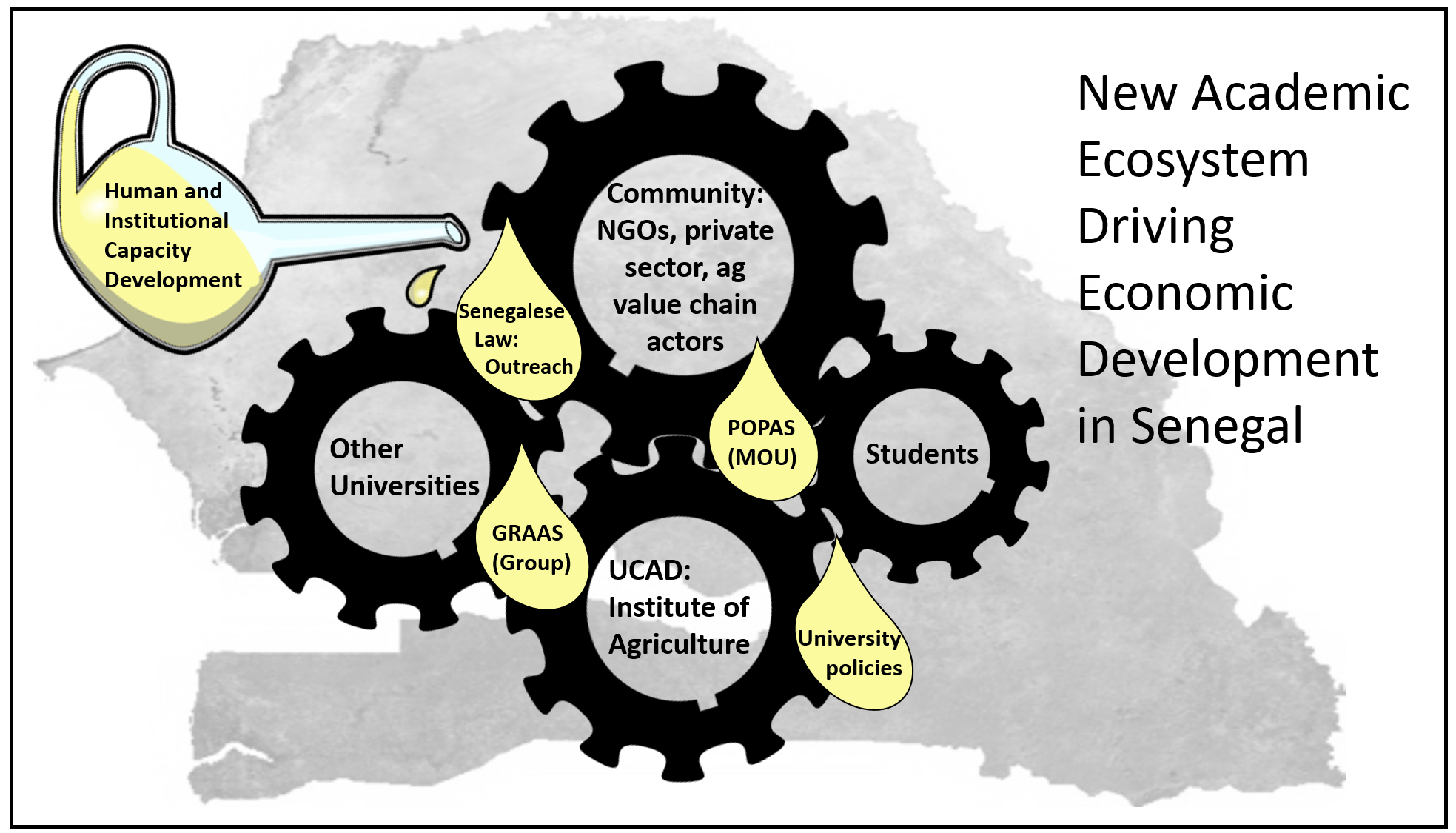The blogs on this page were written by panelists for the June 8-10 Project Design Review Workshop, with editing assistance from Keith M. Moore. The blogs are intended to introduce the issues to be discussed at the workshop. We invite you to begin your thinking and discussion on these issues a little early. You can respond to the blogs in the comments below each blog. Click on “Continue reading” to read the whole post and leave comments. We will post one or two blogs each week leading up to the workshop, so check back. We’re looking forward to the workshop and robust discussions on these important topics for agricultural education and training.
AET Institutional Transformation Workshop Blogs
Institutional Transformation: Leaders and Partners
Amon Mattee, Kandioura Noba, and Peter Koehn
Edited by Keith M. Moore
Institutional leaders are political agents whose success is due to mastery of a set of practices that stabilize the organization and their position within it. Bureaucratic processes and procedures guide behavior in predictable ways to negotiate institutional inconsistencies and conflicts. In this way, an organization secures its role in the environment. Good leadership is often indicated by the ability to follow institutional roadmaps that minimize disruption and assure continuity.
Institutional transformation is nevertheless necessary for healthy organizations. As the organizational environment changes, so too must an organization if it is to remain relevant and viable. Institutional transformation does not just happen. Considerable conscious effort is required to overcome organizational inertia. There are two sources from which transformational change may come. Some organizations may be revolutionized from within by dynamic leaders; others are pushed by external forces in their environment. In order to reinforce the process of institutional transformation of agricultural education and training (AET) organizations in developing countries, development projects have been initiated that organize and focus the forces for change.

Assessing the Impacts of AET Project Contracts and Budgets
Dave Kraybill, Jim Foreman, and Daniel Yahba
Edited by Keith M. Moore
Contractual mechanisms and associated budgets provide the framework for project implementation. This is important for stability and control, but often limits options for effective project implementation. Furthermore, not everyone sees this foundation in the same light. Donors, implementers, and host institutions have differing interests and priorities. Identifying the proper balance for all parties is important for making progress toward achieving project objectives.
In order to better grasp the issues involved, we examine the following set of trade-offs. One can imagine a continuum with three dimensions of variation:
- extent of partner control and accountability;
- risk versus efficiency of project implementation; and
- adaptability versus bureaucratic procedures and controls.
 Each dimension variously impacts the contributions of donors, implementers, and host institutions and the overall effectiveness of project management. Continue reading
Each dimension variously impacts the contributions of donors, implementers, and host institutions and the overall effectiveness of project management. Continue reading
The Challenging Pathway to Immediate Impact
Michael Parr
Edited by Keith M. Moore
The Building Agribusiness Capacity in East Timor (BACET) project targeted making an immediate impact on people’s lives. The original objectives were to quickly improve the employability of youth for the recovering, newly independent economy and introduce business concepts and market-orientation to curriculum at existing agricultural high schools. Under post-conflict conditions, immediate impact was crucial. This required immediate investment in infrastructure at the schools and, although recognized as important, institutional change was seen as a long-term objective outside the parameters of the project, which was originally only two years in duration. Impacts on the educational system were considered a side effect and a longer-term effort.
Skilled, Knowledgeable Teachers are of Paramount Importance
Michael Parr, Michael Schultheis and Jim Simon
Edited by Keith Moore

Hands-on lab training in Senegal. Photo: ERA Senegal
Training teachers is more important than developing the curriculum, although neither is complete without the other. Good instruction involves both quality science and practical experience. Learning skills/capacity is weak among agricultural education and training (AET) students in developing countries, particularly in post-conflict situations. Agricultural professions are often a fallback educational and training choice for AET students who are not generally academically inclined. Stimulating these minds is challenging, and this requires motivated faculty who can bridge the gap between the new science and business of agriculture and real world applications. Rote learning will not suffice. Hands-on training exercises need to be led by those who understand the technology and the learning outcomes necessary to build the skills to operate those tools for profitable enterprises. Continue reading
Community Service Transforms a University into Driver of Economic Development
Kandioura Noba, Larry Vaughan and Irene Annor-Frempong
Edited by Keith M. Moore
A recent law in Senegal challenges its universities to contribute to the country’s development by establishing an outreach mission. Even prior to this law, the Université Cheikh Anta Diop de Dakar (UCAD) was growing beyond its traditional academic missions to build an agricultural science program contributing to sustained economic development. The new law challenges UCAD and the other higher education institutions of Senegal to engage in community development beyond their historic missions of teaching and research. New behaviors will be required. For a faculty to become effective community servants and contribute to economic development, it must build productive relationships with the private sector, professional associations, other universities, university administration, government ministries, etc. This service mindset involves a major re-orientation of traditional university practice. For relationships to be meaningful on each of these levels involves sharing decision-making in the conception and execution of curriculum, research, and outreach activities.

UCAD is far from being the only source of agricultural knowledge and learning in Senegal. Coordination with other universities is important because not every needed expertise for a project resides in the same institution. Continue reading
Trust is Critical for Strong Partnership Engagement
Daniel N. Yahba
Edited by Keith M. Moore
Excellence for Higher Education for Liberian Development (EHELD) is a project funded by the United States Agency for International Development (USAID)/Liberia in collaboration with Cuttington University (CU) and the University of Liberia (UL) since 2011. The EHELD project has been developing and supporting centers of excellence in the College of Engineering at the University of Liberia and in the College of Agriculture and Sustainable Development at Cuttington University in Suakoko, Bong County.

For any international or local community project to succeed in its goals and objectives or to be viable in any given society/community, partnership engagements are a critical factor for donor consideration. Strong partnerships built on trust, mutual respect and understanding among partners provide a solid foundation for successful project implementation. Organizational stakeholders, community members, and other project beneficiaries should have their inputs and views considered. Moving forward in this way gives equal opportunity to all project beneficiaries to take ownership and fully utilize what was intended for them.

